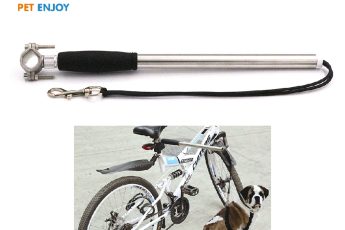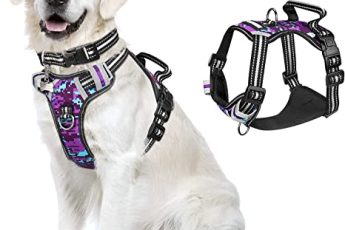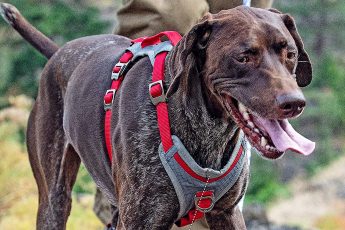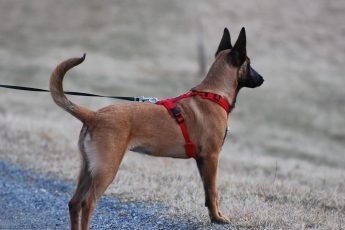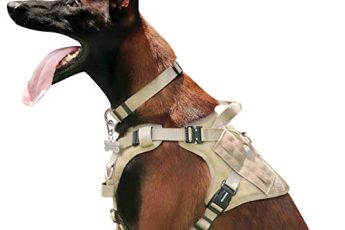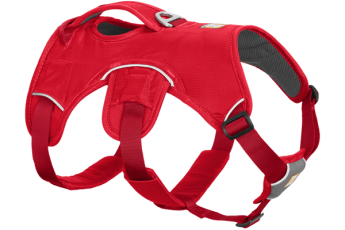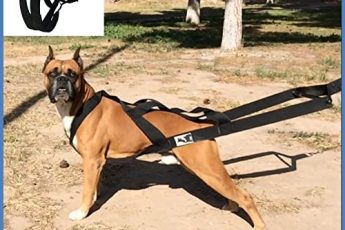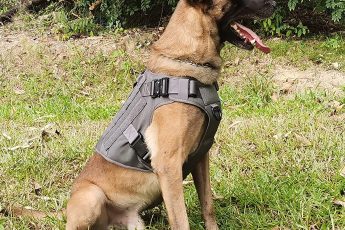There is a dog harness to prevent pulling. A front harness will help turn your dog’s attention to you, and will discourage pulling. It’s also more effective for longer walks because it turns your dog’s back to you rather than his front. A front harness will also help prevent your dog from pulling when you’re walking him or her. Here are some tips to help you get the best harness for your dog. But remember that the front harness may not work for every dog.
Is there dog harness that stops from pulling?
While you can’t always control your dog when you are out for a walk, there is a dog harness that can help you manage your canine companion and prevent excessive pulling. A no-pull dog harness is designed to wrap around your dog’s torso and front legs and contains a chest clip. This makes it easier to steer your dog. The harness also distributes pressure across a wider area of its body, preventing pressure on the neck and throat, preventing injuries to those areas.
A no-pull harness fits snugly around your dog’s chest and discourages pulling by applying stress across his chest, neck, and throat. These harnesses come with a leash and a Swiss velvet lining to prevent chafing your dog’s skin. Some of the best dog harnesses for stopping pulling include Chai’s Choice 3M Reflective Dog Harness, Frisco Small Breed Soft Vest Dog Harness, Noxgear LightHound LED Illuminated & Reflective Dog Leash, and 2 Hounds Design Freedom No-Pull Dog Harness.
What’s the best dog harness to stop pulling?

If you’re looking for a dog harness that prevents your pet from pulling on a leash, you’ve probably come across head halters. Head halters are similar to traditional dog harnesses, but they wrap around your dog’s head and tighten when he pulls. Unlike humans, however, dogs do not have as much muscle strength in their head as humans do, making these harnesses more effective at stopping pulling than traditional collars.
When purchasing a harness for your dog, remember to check the size range. While some manufacturers use a different measurement for your dog’s torso, you should not use weight as a criterion for choosing the right size. Also, harness buckles and hardware are usually rated for a certain weight range. You can also check the manufacturer’s recommendations regarding weight ranges for each type of harness.
How can I get my dog to stop pulling on walks?
Your dog may be reactive to a harness, which will only frustrate them. It may pull to chase a bicycle, play with another dog, or find a safe place to hide. If this is the case, you must train your dog to ignore the harness and focus on other aspects of your walk. Here are some tips:
Start by standing in the same spot where your dog pulls. When he starts to pull, stop walking and call him back to you. Make sure not to jerk him off his feet or get distracted by distractions. When he stops, praise him and try to refocus his attention. Make sure to pay attention to your dog during walks, and don’t set a target destination for him.
Do front harnesses stop pulling?
The front ring attachment of a front dog harness helps the dog to learn not to pull when walking. A front leash turns a dog’s attention to its owner rather than to the leash. This means that a dog who pulls will be automatically directed to the side of the road. This prevents the pulling action from being repeated. However, it is important to remember that the harness is not a substitute for training.
Unlike traditional dog harnesses, front-clip harnesses have no back clips to trigger the pulling instinct. This means that you don’t have to worry about compromising your dog’s balance. When you pull him forward, he uses all of his strong muscle groups. However, if you pull him to the side, he won’t use his strongest muscle groups. That’s why front-clip harnesses are a better option for stopping a dog from pulling.
Is a collar or harness better?
One common question we get is: is a dog harness to prevent pulling better than wearing a collar? Both have their advantages and disadvantages. Harnesses are easier to slip into and out of than collars, and they can also be bulky. Some dogs, however, do not like wearing harnesses. Dogs of brachycephalic breeds, such as Bulldogs and French Bulldogs, are especially susceptible to breathing issues. As a result, they can suffer from tracheal collapse, a medical condition that can be exacerbated by collar use.
One of the biggest benefits of a no-pull harness is that it is more comfortable to wear. Because the harness squeezes the shoulders, pulling is uncomfortable. This helps to prevent neck injuries and promote good walking behavior. Moreover, a no-pull harness is easy to use. Whether you use a harness or a collar is entirely up to you. The main difference is the method of application.
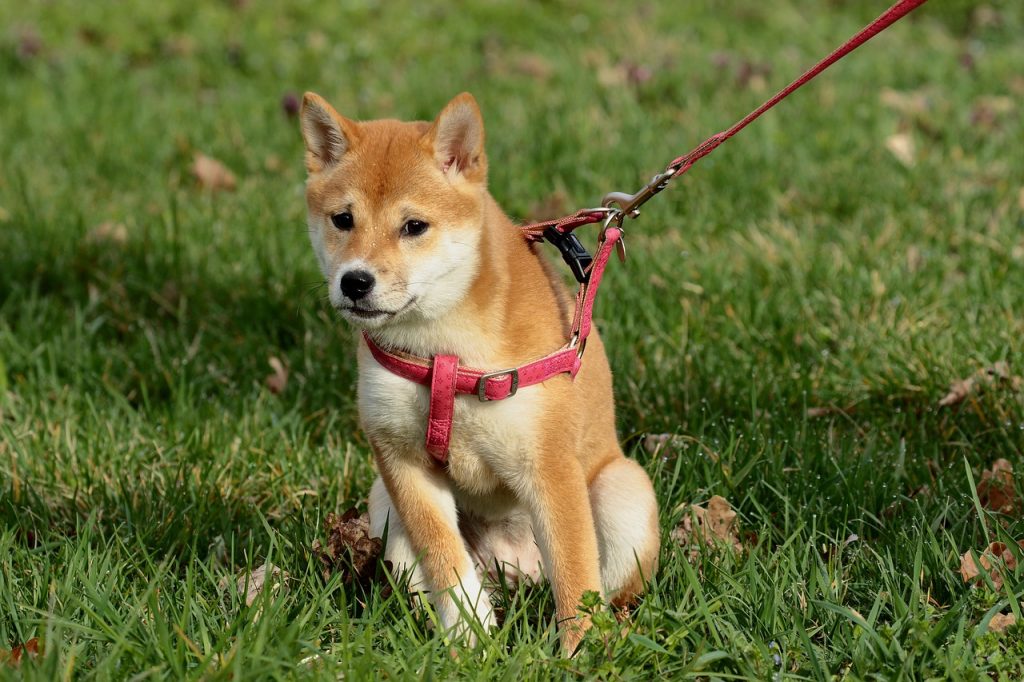
Is a Dog Harness to Prevent Pulling Cruel?
If you’ve ever wondered if a dog harness to prevent pulling is cruel, read this article. It will give you an overview of what no-pull harnesses are and why they’re necessary. You’ll also learn the differences between a regular harness and a no-pull harness. You’ll learn how to properly adjust the harness to prevent pulling in a dog. Once you’ve got it set up correctly, you’ll have no trouble putting it on your dog.
How do I stop lead pulling?
If your dog is leading you around, he may be pulling on the lead. This behavior can cause serious injury to your dog’s neck. To avoid this, use a harness around your dog’s chest instead of a collar. You should also be able to give him a treat for a successful training session. Listed below are some tips to help you get your dog to stop lead pulling. They will make the training process a lot easier and safer for both of you.
If you want to prevent your dog from leading you around, the first step is to teach him to walk calmly on the lead. This behaviour can be taught to your dog by removing all distractions and rewarding him with food treats when he does it properly. Using a clicker training device, as well as giving your dog food treats every time he walks nicely on the lead, can help you train your dog to walk calmly.
What is a no pull harness?
A no-pull dog harness prevents your pooch from pulling you when you walk it. They are specially designed to prevent pulling and promote a natural gait. The harness fits snugly on your dog’s body and is adjustable. Make sure it fits snugly, but not too tight. Also check for room for your fingers underneath the straps. No-pull dog harnesses are designed for big dogs, so small breeds will not fit.
The Freedom No-Pull Dog Harness comes in four sizes, including extra-small, small, medium, and large. It fits chest sizes ranging from 15.7 inches to 37.2 inches. It also features adjustable straps and a D-ring on the back strap for a more secure fit. It is available in a variety of colors and styles and is durable and padded for added comfort.
Are no pull harnesses cruel?
No-pull dog harnesses can be effective at preventing your pet from pulling on the leash. Many harnesses have a front piece that hangs low. This causes the harness to cross over your dog’s legs and potentially trip him. Moreover, dogs may not like wearing a harness in the beginning. The first step to stop this behavior is to prevent your pet from pulling on the leash.
A comfortable hiking harness is one that sits in the armpits, leaving ample space behind the front legs. The harness can be a Norwegian-type or Y-style harness with chest pads and no-pull features. But keep in mind that a no-pull harness will restrict your shoulder range of motion and will limit the backward movement of your legs. For this reason, you should consider wearing a harness before making your purchase.
Difference between a no-pull harness and regular
Depending on your needs, there may be a time and place for both a no-pull and a regular dog harness. No-pull harnesses are designed with a front clip that prevents your dog from pulling on the leash, while regular harnesses use both the front and back clips for control and training. No-pull harnesses are a great choice for training, since they provide full control over your dog while walking.
No-pull harnesses are easy to use and are a popular option for walking in public. The front clip allows you to lead your dog back to you if necessary, while the back clip guides your dog along with gentle pressure. A no-pull harness is easy to adjust and is usually available in a range of colors and sizes. These harnesses are made of durable polypropylene webbing and are often equipped with reflective trim to increase visibility and safety.
Why are front clip harnesses bad for dogs?
A front clip harness is a dog leash attachment that attaches to the dog’s front chest, giving the owner more control over the dog. The design of this type of leash attachment keeps the dog from moving ahead, causing pressure to the throat and neck. A front clip harness also distributes the pressure evenly around the dog’s body, dissuading it from trying to escape.
There is some evidence that front-clip harnesses work for dogs with leash problems, but they are not a cure-all solution. A front-clip harness helps prevent a dog from pulling on a leash, but it doesn’t address the root cause of the problem. Proper dog training will permanently solve the problem. It is not a hard task, but it will take a bit of patience and a pocketful of treats. Watch the video below to learn how to teach your dog to walk with a leash without a front clip harness.

